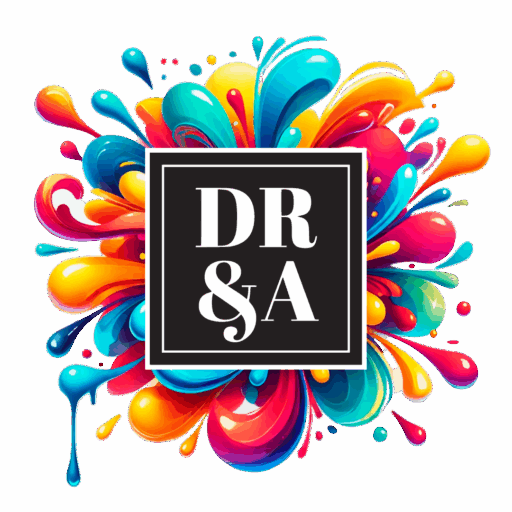We’re all entrepreneurs at heart. We understand the value of addressing a consumer’s pain point, of developing a market based on that premise and staking claim to our share of that market. The macrocosm of business looks like a seamless, fluid thing – until we attempt to harness its power for ourselves.
Where too many entrepreneurs stumble is in the decompression of that business flowchart. What seemed like a straight shot from Point A to Point B is actually ten smaller steps and inevitably we’re left to wonder, “What are my priorities?” – and, if we’ve really got our business caps on – “How do I optimize my efforts?” There are a lot of great answers to each of those questions, but one oft-overlooked answer to both.
A company’s brand is one of its most valuable assets, and it’s never too early to start thinking about yours. Whether it’s a punchy name, a sleek logo, or a portfolio that includes both and more, good brands require introspection and foresight. What qualities and causes do you stand for? Who are you now? Who will you be two, five, and ten years from now? These are the kinds of questions you’ll need to answer to develop a brand that complements your business; a design agency can help tremendously to see you through. But the process too often ends there, and it shouldn’t.
Trademark protection is essential to a successful commercial business, and I won’t be the last to tell you that the benefits far outweigh the costs. The international intellectual property (“IP”) landscape is staggeringly underappreciated by small business owners. As of 2010, IP-intensive industries accounted for $5.06 trillion in value added to the US economy, or roughly 34.8 percent of the US GDP. In the EU, that number rises to 42 percent, 36 percent of which is generated by strictly trademark-intensive industries.
Long story short, there is always money in a well-developed, protected brand – there are even entire businesses devoted to brand valuation and ratings. Apple’s brand is worth an eye-popping $104 million. Samsung ($78M) and Google ($68M) are not too far behind. And it’s not just consumer goods manufacturers who make bank on their trademarks; companies across the commercial spectrum owe significant portions of their overall valuation to their trademark portfolio, from banking (Bank of America: $26M) to shipping (UPS: $19M). But, again, without trademark protection, even the strongest brand is essentially valueless; this is because an unprotected brand gives no exclusivity to its creator.
[bctt tweet=”At its core, trademark law is about avoiding consumer confusion by making the source of a good or service easily identifiable.” username=”drosslaw”]
Exclusive use of a brand mark through trademark protection means great things for a business. As we’ve seen, protection gives the mark potential for value – It is company property, just like any physical asset; and it becomes appreciable and saleable. But a trademark is also valuable in a myriad of unquantifiable ways. At its core, trademark law is about avoiding consumer confusion by making the source of a good or service easily identifiable. The goal is to promote healthy competition and freedom of choice among consumers. As a small business owner, that last sentence should ring like fine crystal in your ear. It means that Mom and Pop, if they nurture their trademarked brand with a quality product and insightful customer experience, can stand toe-to-toe with the Apples of the world.
In the age of communication, we all would like a voice. Think of your trademark not just as a voice, but a persona. You’ve heard the telltale NBC chime; you’ve seen the full-bodied Netflix font; you’re almost trained to crave a pick-me-up when you pass a Starbucks logo. These marks are a business’s persona, and they allow the team behind the brand to communicate with the consuming public in a cohesive way. It’s a chance to convey messages about the product, goals, and values of a company both within the branding itself and in media.
We live in a time where Facebook and Twitter accounts hold real, fungible value based on the number of followers they have. Companies leverage their brand personas on social media sites in very impactful ways to get feedback, gain exposure, and ultimately drive sales. One of the most underrated benefits a trademark provides is the ability to expand a company’s line of goods and services. Brand recognition can serve as a powerful endorsement for an otherwise unproven product. Years later, we can debate whether McDonald’s health menu is a success, but everyone knows they serve salads now – and chances are you’ve tried one. You simply don’t get that level of attention without a strong brand.
Finally, a trademark (almost singlehandedly) gives businesses the opportunity to enter new markets. Without getting too technical, a federal trademark provides nationwide protection; without nationwide protection, businesses are limited to common law trademark rights, which are not exclusive and operate only in the geographic region that the company currently occupies, making expansion almost prohibitive.
I hope I’ve been able to shine some light on one piece of the enigmatic machine that is business. If you take nothing else away from this first post in our 101 Series, know that your brand should always be in the forefront of your business considerations, and you should treat it as among the most valuable of your company assets. As always, we welcome discussion in the comments section and look forward to hearing from you!


